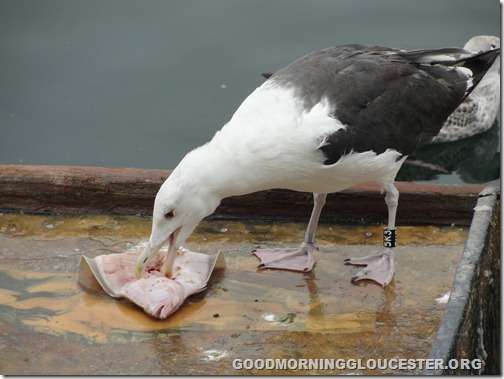 Great Black-backed Gull (Larus marinus)
Great Black-backed Gull (Larus marinus)
(last update: July 12, 2015)
Great Black-backed Gull (Larus marinus) 5K3 adult, September 29 2010, Gloucester, MA. Picture: Joey Ciaramitaro.
Banded as breeding adult on Appledore Island, May 24 2010.
Joey Ciaramitaro had another Appledore gull resight in Gloucester on September 29. “5K3" is an adult that was banded on May 24, 2010. In addition to being part of the long-term banding project, 5K3 is also part of a study being conducted by a Cornell undergraduate, Alexis, this year. Alexis took blood samples from several pairs of Great Black-backed Gulls and their chicks in order to look at the rate of “extra-pair paternity.” That is, how often do chicks in one nest have multiple fathers because Mom mated with other males (besides her partner)? Recent studies indicate that extra pair paternity is common in songbirds, but less so in seabirds.
Anecdotal evidence suggests that some Great Black-backed Gulls do engage in extra pair fertilization on Appledore. A pair of GBBGs (“Phil” and “Phyllis”) routinely nest in front of the migratory bird banding station on the island. One day, the banders observed Phil collecting lots of nesting material i.e., grass, and piling it on top of and around Phyllis. The banders were initially impressed by his great effort to contribute to the nest. Once the very large pile was made around and on top of Phyllis (appearing to obscure her view), Phil walked down toward the water’s edge to another GBBG nest and mated with the female at that nest. After that event, Phil was re-named, “Philandering Phil.” Alexis should have some results from her study this Winter or Spring. We also banded all the pairs included in her study, so we have the added benefit of being able to track “divorce” rate in these pairs in future breeding seasons.
